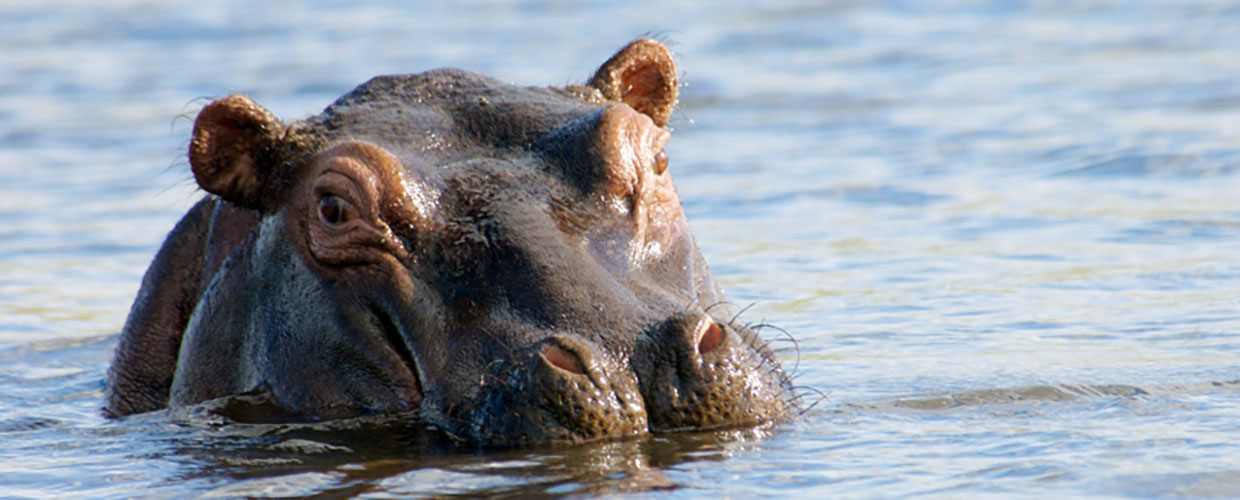
HIPPOPOTAMUS
Hippopotamus amphibius
H ippopotamus occur in the Kunene, Okavango and Zambezi rivers that form borders in north-eastern Namibia, as well as in the rivers and swamps of the Caprivi Region. During the day they rest in the water or on the banks of the river, at night they leave the water to graze on land, moving relatively far away from water.
Hippopotamus live in family groups and sometimes also in large herds. Old bulls are often territorial loners. They can become extremely dangerous and Africans in dug-outs fear them more than crocodiles.
Hippopotamus are mostly hunted in the water. It is recommended to hunt them in the early morning after they have grazed during the night because the trophy animal will quickly come to the water surface due to digestion gases building up in the intestines.
Assessment of the trophy is only possible when you wait for the hippo bull to yawn. Mostly only a brain shot is possible, which should best be aimed to the side into the auditory canal or just under the ear.
In the early morning or late evening it is possible to shoot a hippopotamus on land when it is leaving the water. Occasionally large animals can be surprised during the day on a sand bank or in shallow water.
Bulls can be distinguished from cows only by their somewhat bigger body size and their dominant behaviour.
HIPPOPOTAMUS
Hippopotamus amphibius
| Shoulder Height: | 130-140 cm |
| Mass: | 1000-2000 kg |
| Life expectancy: | 30 years |
| Gestation period: | 7.5-8.5 months (1 young) |
| World record trophy: |
163.8 cm, Congo |
| Rowland Ward Min: | 76 cm |
Gallery
HIPPOPOTAMUS TRACK

